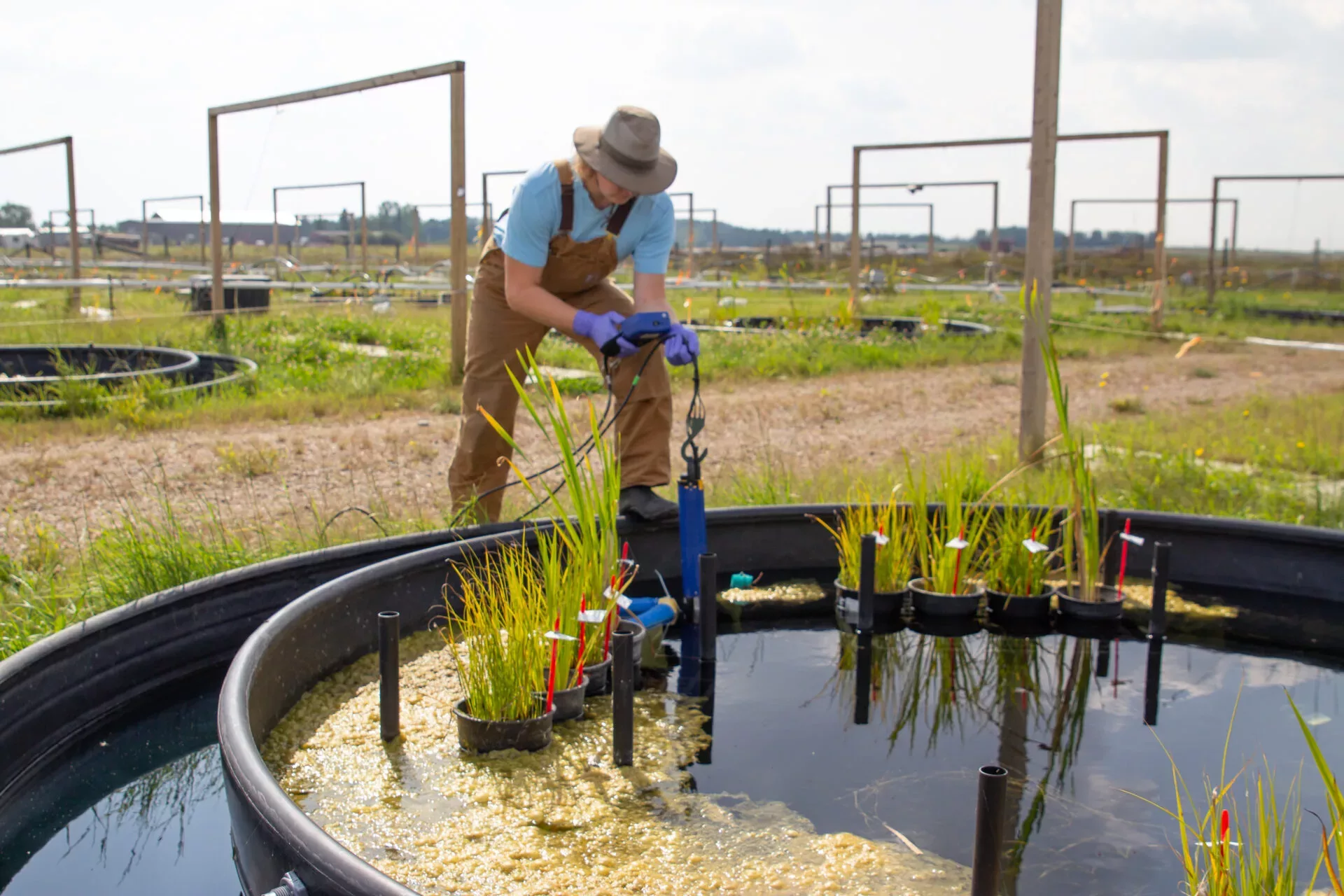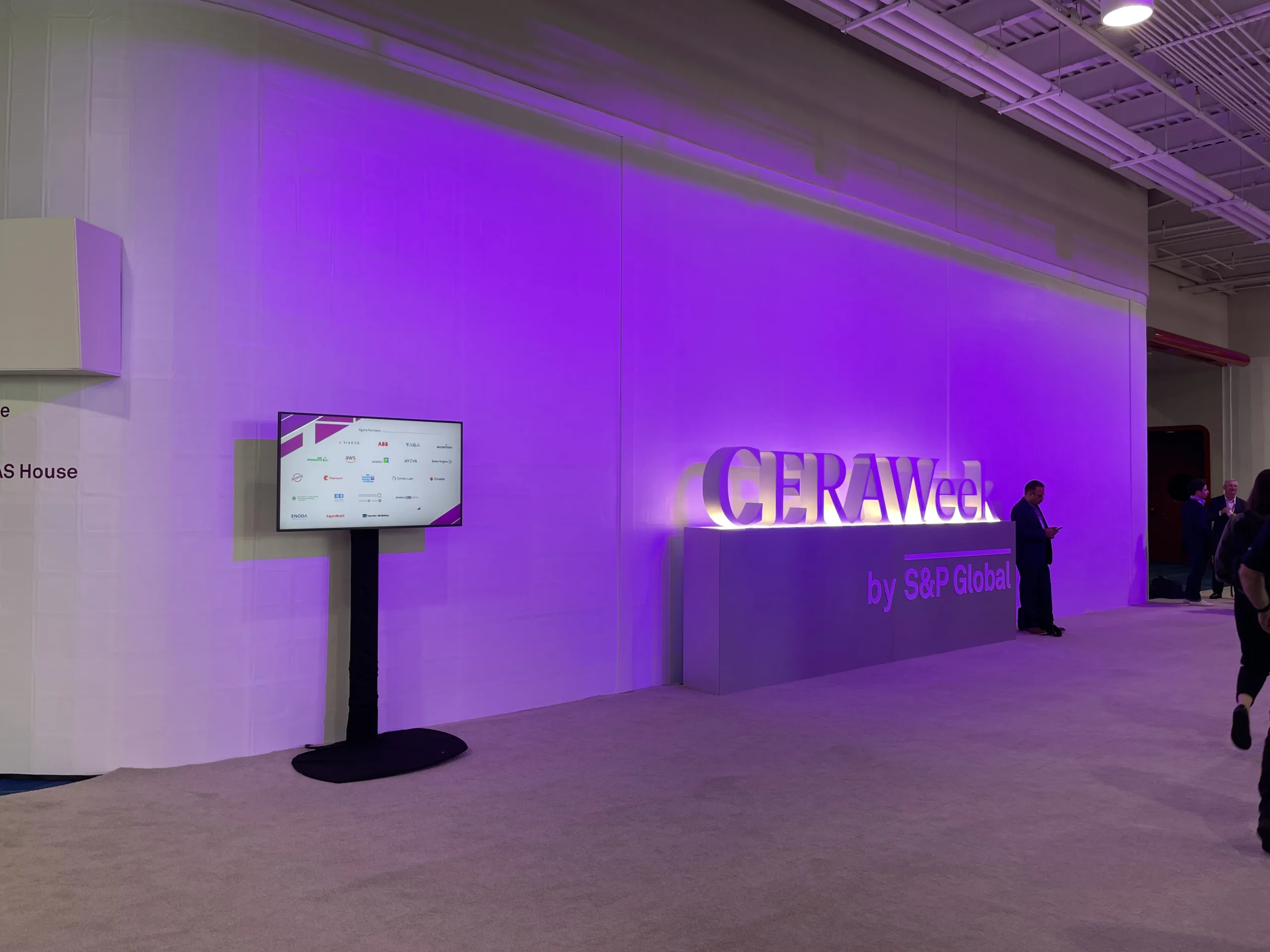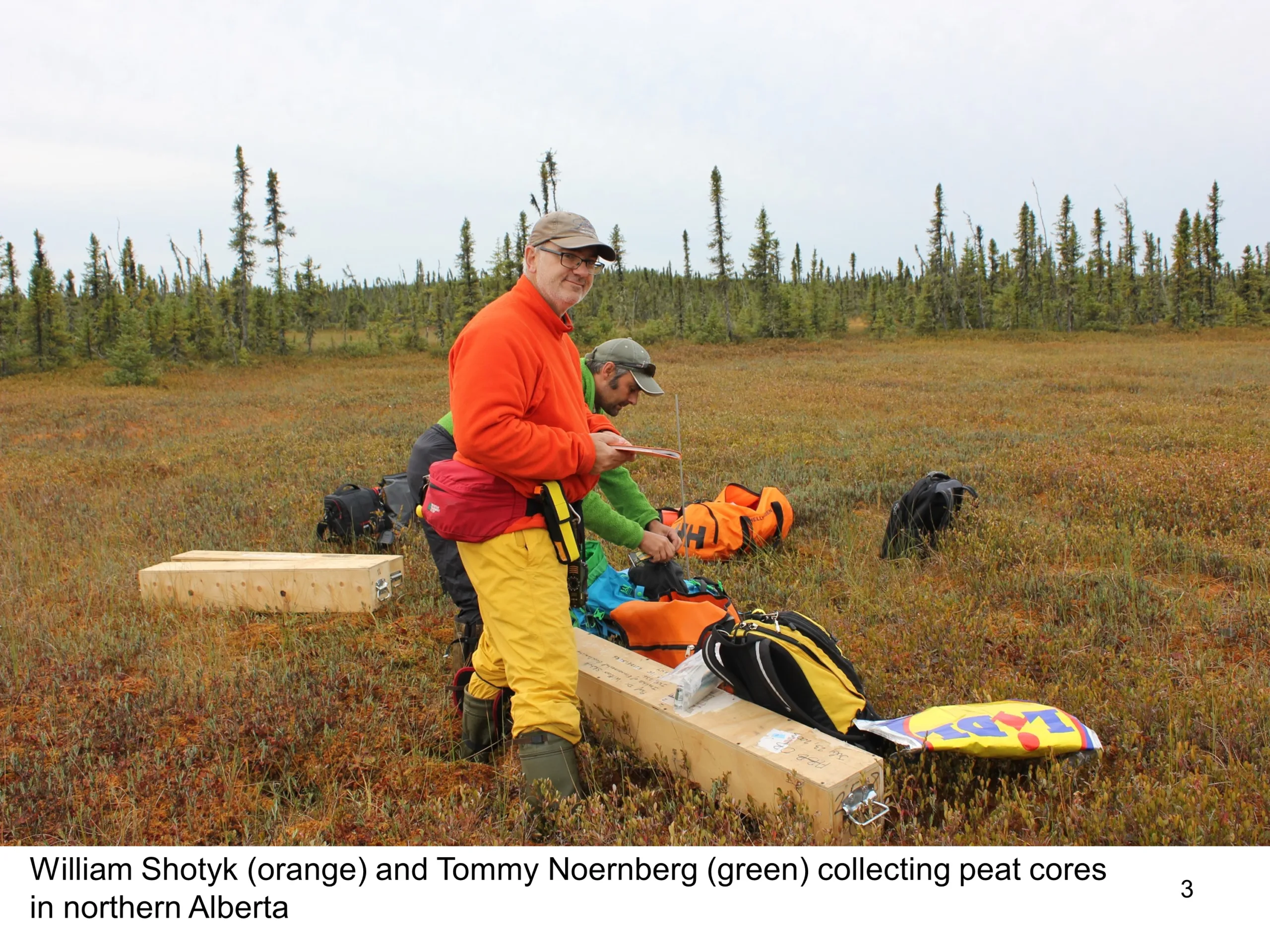Outdoor trials test water treatment innovation

Efforts by Canada’s oil sands industry to lessen its environmental footprint have resulted in globally significant work to reduce impacts to air, water and land and support biodiversity in Alberta’s boreal forest. The industry aspires to be a world leader in environmental management. Here’s one example of the work underway by Pathways Alliance companies: water management.
Outdoor trials test water treatment innovation
Ryan Melnichuk is passionate about data. As a research scientist at InnoTech Alberta – an applied research organization and subsidiary of Alberta Innovates – Melnichuk leads a large outdoor industry trial at InnoTech’s Aquatic Mesocosm Facility. Pathways Alliance mining operators have undertaken a series of joint industry projects here to provide information that will support the design of operational pit lakes in the closure landscapes.
This trial is delivering lessons about how plants, insects and microscopic life interact over time with water used in and tailings created by oil sands processes. A University of Alberta graduate, Melnichuk headed to the University of Vermont for a PhD in Plant and Soil science before joining InnoTech in 2017, just as the project was getting underway. Pathways Alliance sat down with Melnichuk to find out more about his work.
Q: What is a mesocosm?
A: Mesocosms are a common tool for testing innovation on a larger scale in a controlled and replicated way under realistic outdoor conditions. It’s a simplified test system that falls between small scale experiments in a laboratory and large-scale outdoor field studies. We’re measuring a range of variables in this project, such as water chemistry, plant growth, insect diversity and toxicity – basically how all these things interact with each other in a mesocosm. We are also looking at how test materials (oil sands by-products) affect the water quality of these systems.
Q: Why is this work important?
A: This is unique research that has application to the oil sands (and potentially other industries) and will help better manage some of industry’s challenges. In this case, we’re testing process water – water that’s been used to extract bitumen as part of the mining process. When a mine closes, tailings and remaining process-affected water may be transferred to the empty mine pit to create a pit lake.
This reclamation approach is used around the world to return mine areas to functioning ecosystems. The results that come out of our work will help inform best practices around the creation of pit lakes in Alberta.
Q: What does the aquatic mesocosm facility look like?
A: We have 30 individual mesocosms, which are basically large tanks – 3.6 metres wide and 1.5 metres deep – sunk into the ground that mimic natural conditions as closely as possible. Because everything is fully contained, we can test industrial by-products with practically no risk that they will escape to the environment. We can observe the effects of ambient outdoor conditions (such as temperature, sunlight, and wind) on the development of ecological communities in the mesocosms, which would not be possible in a laboratory setting.
Q: What’s in each mesocosm tank?
A: The process of establishing our model ecosystems was the same across all mesocosms. We filled each tub with 15,000 litres of Athabasca River water, then added sediment to make sure they were each seeded with similar types of biota (such as aquatic insects, phytoplankton, and microbes).
After allowing the mesocosms to sit for a couple of weeks to allow biotic communities to further establish, we added varying amounts of process water and tailings supplied by oil sands producers in Fort McMurray. Then we planted aquatic species, such as water sedge (Carex aquatilis) and Ratroot (Acorus americanus), that are native to the oil sands region. After that step, we monitored the systems to document the response of water chemistry and biota to different treatment types over two years.
Q: Have there been any surprises so far?
A: I was surprised when I first saw our toxicological results on the process (industrial) water. I was expecting it to be really toxic, but after only a few weeks in the mesocosms the toxicology tests indicated it was generally low, or non-toxic. Another surprise was that some plants grew quickly in process water. That’s likely because it contains more nutrients than river water, so it’s one of the things we want to understand in relation to potential long-term aspects.
Q: Do you have a standout experience from this project?
A: We had to clean out the mesocosms after the first experiments and I put on waders and got inside each tub to empty it out. It was freezing cold and I was knee deep in sediment and water. I remember chuckling and thinking: ‘I went to grad school for this!’ When people think of scientists, they think of white coats and clean, warm labs, but we do this kind of work too.
Find out more about Innotech Alberta’s aquatic test facility and the mesocosm project.
Learn more about the efforts of Pathways Alliance members to advance responsible development of the oil sands industry.


